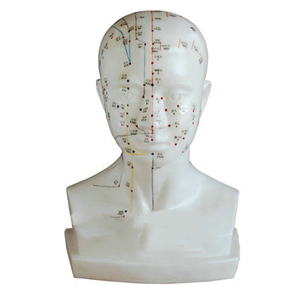Homepageпјҡ NEWS >> Head acupuncture model: Shortening the cycle from theory to practice
As a part of traditional Chinese medicine, head acupuncture has gradually gained more attention in clinical medicine in recent years, especially in the treatment of nervous system diseases (such as headache, insomnia, migraine, etc.) and some functional diseases (such as anxiety, depression, etc.), showing unique efficacy. Acupuncture and moxibustion has been widely used in clinical practice by stimulating specific acupoints, regulating the body's qi and blood, improving the disorder of qi and blood, and obstructing channels and collaterals.
However, although head acupuncture is well supported in theory, its promotion in clinical practice is often limited by cycles of education and training. Medical students need to master acupuncture skills after a long period of theoretical study, simulation training and clinical practice. Therefore, how to shorten the cycle from theory to practice is an urgent problem in medical education and clinical application.
The role of head acupuncture model

1. Introduction of simulation technology
In recent years, with the development of medical simulation technology, head acupuncture model has been gradually used in clinical education and training. These simulation models allow students to practice acupuncture operations in a risk-free environment through realistic simulation of skin, pinhole positioning and response mechanisms. The model not only simulates the anatomical structure of the head, but also reflects the possible physiological reactions during acupuncture, thus helping students to master the skills faster.
2. Shorten training time
Traditional acupuncture training usually requires participants to go through a long period of practice and mentor guidance. After using the simulated human model of head acupuncture, students can practice the operation skills repeatedly in the simulated environment, reducing the time cost in clinical teaching. In addition, simulation models can be used for "pre-training" so that participants have basic acupuncture skills and related knowledge before entering the clinical environment, which significantly reduces the cycle from theory to practice.
3. Improve students' practical ability
Through the head acupuncture model, medical students can be familiar with the acupuncture site, depth, Angle and other operation points. The data show that the accuracy and comfort of acupuncture operation have been improved significantly after the simulation training. According to one study, students trained with simulated models improved acupuncture accuracy by about 30% compared to traditional teaching methods.
4. Enhance clinical adaptability
The model not only helps students to master the operation skills, but also enables students to better understand the clinical application of head acupuncture. For example, through model demonstrations, students can learn how to choose different acupuncture protocols according to different symptoms of patients and improve clinical decision-making skills. In addition, the feedback mechanism of the model (such as the appropriateness of the acupuncture depth, the patient's response, etc.) can help students adjust the operation mode in time to reduce clinical errors.
Clinical significance
The introduction of head acupuncture model can effectively shorten the time of medical students from theoretical study to clinical practice, so that they can adapt to the clinical environment earlier and better. More importantly, through simulation technology, students will be more confident in the face of real patients and be able to complete treatment more accurately, thus improving the overall quality of medical care.
Data support: Studies have shown that the use of head acupuncture simulation models can significantly improve the accuracy and safety of acupuncture operations. One survey data showed that students who practiced acupuncture using a simulated human model were able to reduce the error rate in actual clinical practice by about 25%. In addition, the use of head acupuncture simulation models can increase students' understanding and confidence in the efficacy of acupuncture treatment, thereby improving the patient's treatment experience.
Sum up
As an advanced medical education tool, head acupuncture model can shorten the period from theory to practice significantly through its simulation and high efficiency, and provide a more direct and effective training way for medical students. At the same time, the use of the model helps to improve students' operational skills and clinical adaptability, and ultimately improve the treatment effect of patients. Therefore, head acupuncture simulation technology is undoubtedly an important innovation in clinical education.